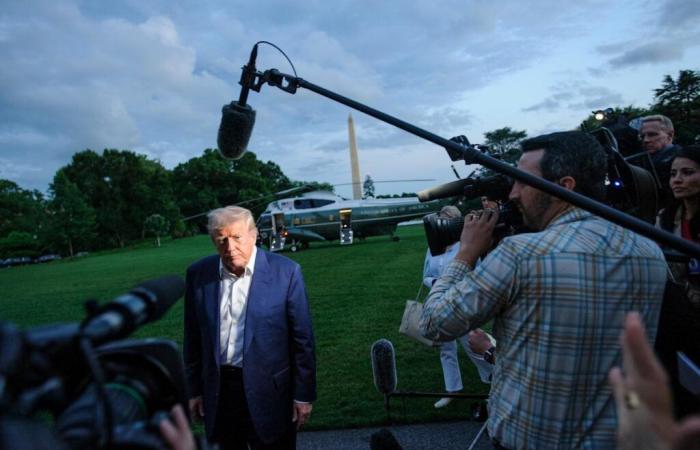New York (AP) – President Donald Trump has opened a new front in his tariff war, pointing to films made outside the United States.
Trump published Sunday on his social truth platform that has authorized the Department of Commerce and the Office of the United States Commercial Representative to impose a 100% tariff “to any and all films that enter our country and that are produced in foreign lands.”
“The film industry in the United States is dying quickly,” he wrote, complaining that other countries “are offering all kinds of incentives to attract” filmmakers and studies. “This is an effort arranged by other nations and, therefore, a threat to national security. It is, in addition to all this, messaging and propaganda!”
At the moment it is unknown how such a tariff on international productions could be implemented. It is common for both large and small movies to include production in the United States and other countries. Large budget tapes such as the next “Mission: Impossible – The Final Reckoning”, for example, are recorded in different parts of the world.
Incentive programs have influenced for years in the place where films are filmed, which has made less and less films in California and more in other states and countries with favorable tax incentives, such as Canada and the United Kingdom.
However, tariffs are aimed at bringing consumers to American products. And in cinemas, films produced in the United States dominate the national market by broad margin.
China has increased its national cinematographic production, culminating with the animated success “Ne Zha 2”, which raised more than 2,000 million dollars this year. But almost all of their sales came from Continental China. In North America, only 20.9 million dollars raised.
The Motion Picture Association (MPA for its initials in English) did not immediately respond to messages for comments.
The MPA data shows how much Hollywood exports have dominated cinemas. According to the MPA, American films produced 22.6 billion dollars in exports and a commercial surplus of 15.3 billion dollars in 2023.
Trump has lived up to the nickname of the “tariff man” who gave himself, imposing new taxes on products manufactured in countries around the world. That includes a 145% tariff on products from China and a 10% base tax on products from other countries, with the threat of increasing import taxes.
By imposing unilaterally tariffs, Trump has exerted an extraordinary influence on trade flow, creating political risks and leading to the market in different directions. There are tariffs on cars, steel and aluminum, and in the coming weeks they would enter into force on products such as pharmaceutical medications.
Trump has expressed his concern for the transfer of film production abroad for years.
Shortly before assuming the position, he announced that he had chosen actors Mel Gibson, Jon Voight and Sylvester Stallone to serve as “special ambassadors” against Hollywood to “return bigger, better and stronger than ever!”
The production of film and television in the United States has had to fight several obstacles in recent years, with setbacks such as the Covid-19 pandemic, Hollywood unions strikes of 2023 and the recent forest fires in the Los Angeles area. Total production in the United States decreased by 26% last year compared to 2021, according to Produro data, a firm that tracks productions.
The survey between executives that the group performs every year, in which he asked about the favorite places to film, did not reveal any point in the United States in the first five places, according to the Hollywood Reporter. Toronto, the United Kingdom, Vancouver, Central Europe and Australia occupied the first places, with California in sixth place, Georgia in Seventh, New Jersey in Eighth and New York in Ninth.
The problem is especially serious in California. In the Los Angeles Metropolitan Area, production last year decreased by 5.6% compared to 2023 according to film, only surpassed by 2020, during the pandemic peak. Last October, Governor Gavin Newsom proposed to expand the California Film and Television TV show from 330 million dollars to 750 million.
Other cities in the United States such as Atlanta, New York, Chicago and San Francisco have also used aggressive tax incentives to attract film and television productions. These programs can take the form of cash subsidies, such as Texas, or tax credits, offered in Georgia and New Mexico.
“Other nations have been stealing their abilities to make films to the United States,” Trump told journalists at the White House on Sunday night after returning from a weekend in Florida. “If you are not willing to make a movie inside the United States, we should have a tariff about the movies that enter.”
___
Associated Press Gary Field journalist contributed to this office from Washington.
___
This story was translated from English by an AP editor with the help of a generative artificial intelligence tool.






